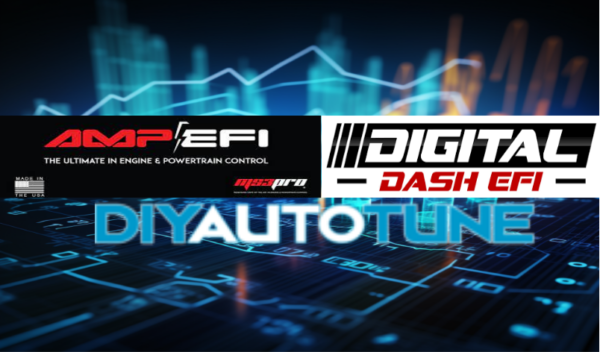When is it time for a Stand Alone ECU?
If you have been involved at any level in just about any form of motorsport from fire-breathing drag cars tearing up the quarter mile to the asphalt bending machines at your favorite road course. Cone-crushing autocross monsters or the adrenaline-inducing world of drifting. You have probably noticed something similar with all of them. Before they head out on track to do battle, or as soon as they get back from a session, there is very likely someone on the team with a laptop computer hooked up to the vehicle and pouring over what looks like enough data and graphs to land a small spacecraft on a distant planet. What are these folks doing you might ask? In almost every case with modern-day motorsports, they are collecting data and making adjustments to the vehicle’s performance, using a standalone ECU.
Now, what does this have to do with you, and your current project? The short answer. Everything they are capable of reading, tuning, tweaking, and taking advantage of can be available to you too. This isn’t a hardcore tuning lesson or an instructional “how to” install guide. Those will come later. Is it time to step up to standalone engine management? Let’s dive into when making the switch might be the answer.
Standalone Engine Management vs. Original Equipment
First off let’s talk about what we mean by standalone engine management. We’re not here to argue the merits of EFI or Electronic Fuel Injection vs. carburetors in a modern motorsports application. That debate has been settled a long time ago and I recommend checking out the EFI Tuners Guide series by Jerry Hoffmann (founder of DIYAutoTune.com) for all the deep-dive details on making the switch to EFI. We’re talking about the advantages of using an aftermarket engine management system in place of the factory’s original equipment unit or tossing the old carburetor in favor of a more modern solution. For more than 40 years now, vehicle manufacturers have recognized the advantages of EFI. By electronically controlling the amount of fuel being injected into our engine and taking precise timing control under any operating condition, engines have gotten exponentially more efficient and powerful.

This increase in efficiency combined with valve timing control, enhanced cylinder head designs, and materials technology has allowed engines to become smaller and lighter while still producing impressive horsepower and torque. Now, as you might have guessed they didn’t design for a world of tripling horsepower output or some of the wildest engine swaps you could imagine. This is where a standalone ECU really shines. The term “standalone” is used to describe an engine management control module or ECM, that operates without the factory engine computer, or in many cases where there was no factory computer to begin with.
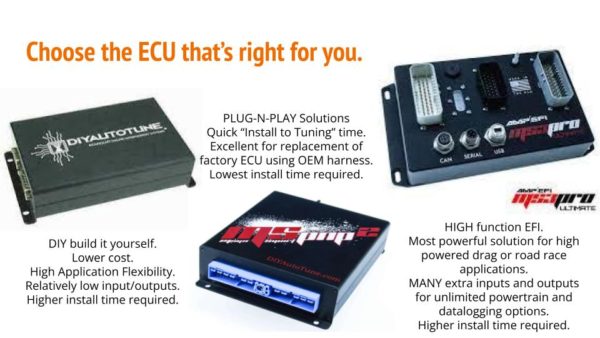
While original equipment manufacturers have done a great job of providing everyday drivability, 100,000-mile-plus reliability, and ever-better fuel efficiency they do have their shortcomings. The modern engine management used on most passenger vehicles today can only handle a change in VE or “volumetric efficiency” somewhere around 20%. Don’t let the big words scare you though, we’ll get into that later. The important thing to note right now is that any increase in VE is going to have a direct impact on that engine’s horsepower and torque output. Let’s put that into real-world numbers. Let’s say you had an engine producing 200hp from the factory, and through modifications is now making 240hp. That’s a 20% increase, and in some cases will exceed the limit of what the factory ECU is capable of safely controlling.
The beauty of a standalone ECU is that now you have complete control over the injectors, ignition timing, idle controls, cooling fans, boost, nitrous, etc. The possibilities are endless. Throwing a big turbo on your fox body Mustang, tuning an NB Miata to its fullest potential, or breathing new life into that classic hot rod with a more modern drivetrain standalone engine management is your answer. So let’s examine why you may want to consider this route.
Fueling the fire
As our friend Mr. Clarkson might say “Pooooooweeeer!”. Power is what we all want right? At least in terms of horsepower, this is the ultimate goal with many of our projects. It doesn’t always mean we’re out to build the next world record, but more than we have is usually better right? The idea should be to optimize our particular combination to make as much power as it can safely and reliably. How can making the leap to an aftermarket standalone ECU help with that? First off, it’s going to give us the ability to control how much fuel is being fed to our engine and when. This is step number one in power production. The correct amount of fuel at the correct time. If any of you have had the displeasure of sitting at a stoplight with the choke cable pulled out in a ‘72 Toyota Celica just so it will idle and have enough throttle response to get through the light, then slowly opening the choke back up as the engine speed increases and load decreases, all the while trying to shift gears and keep a car with ancient steering on the road (which I have), then you know how important the right fuel mixture at the right time can be.
What we can achieve with standalone management is the precise opening of our injectors at any given load (or boost), and any given RPM. Do you need a little more fuel at idle because of the big choppy cam? No problem, dial it in. Do you want to lean it out a bit at part throttle cruise for better fuel economy? Cool, hit a few keys in the right cell, and presto less fuel at that particular point without affecting drivability anywhere else. And, better standalone ECUs give us the ability to log and read enormous amounts of data from our engine in real-time so we can make these adjustments without guessing.
Timing is everything
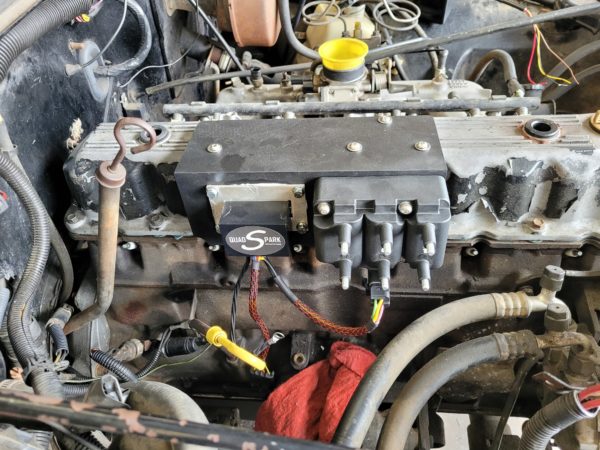
Step number two in power production is timing. Ignition timing is everything when it comes to the performance and long-term reliability of our engine, and accurate correct ignition control is key. Ignition timing can have a huge impact on how an engine idles, responds to throttle, and performs at peak power. What we need is a steady reliable spark to occur EXACTLY when the engine needs it. Changes in compression ratio, fuel types, boost levels, camshaft profile, and even temperature or altitude can demand a change in ignition timing. While every engine combination will have its own specific timing needs at every load and RPM, the standalone ECU gives us the ability to not only provide it based on a wide variety of conditions but the ability to make adjustments in very specific areas of the overall map. Just like with fueling, if we need a little more timing during throttle transitions, or a little less at peak torque we can make those adjustments without making changes to the entire table. This gives us immense versatility when it comes to things like adding turbochargers, superchargers, or nitrous oxide where timing retard usually comes into play.
Availability
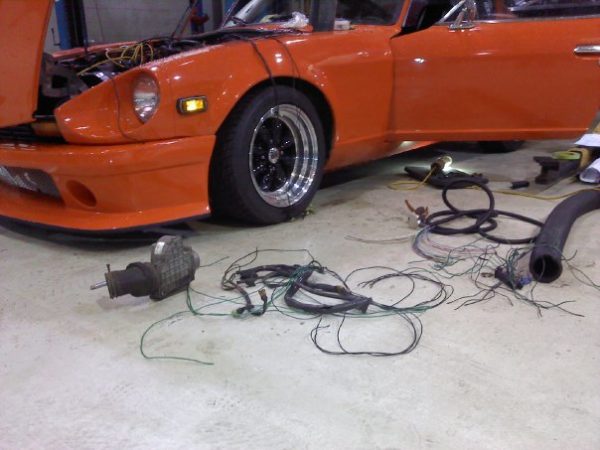
It may not sound like a reason to go with a standalone ECU, but parts cost and availability for your particular project can play a major role in making the decision. More and more often finding replacement parts for early fuel-injected vehicles is becoming tough, and in some cases impossible. With older cars like the Datsun 280Z , early Alfa Romeos, and even more modern C4 Corvettes finding replacement ECUs can be daunting. In some cases, the cost associated with moving to an aftermarket ECU can be comparable to a factory replacement unit. And even if you do find a replacement you are still stuck with the ancient limited technology of the O.E. unit. Going with an aftermarket solution ( which in some cases can be plug-and-play) will give you the benefit of modern reliability and adjustability future proofing your project for any modifications down the road.
Versatility
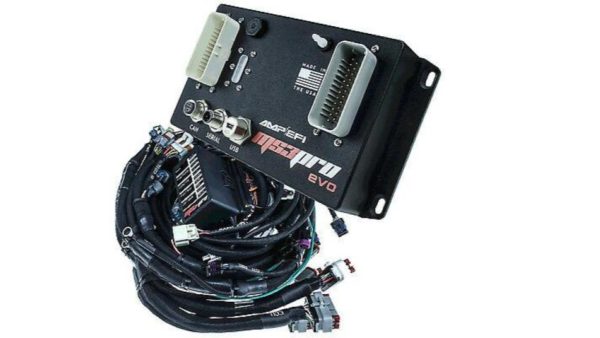
Now for the fun part. Let’s take a modern powerful power plant, and swap it into an awesome chassis. The idea of taking a more powerful engine and bolting it into something smaller, lighter, or just cooler is as old as hot rodding itself. When it comes to today’s swaps, engine management, and wiring are some of the biggest things to consider. While it is possible to use the factory ECU and wiring harness from the donor vehicle, it will always be a compromise at best. Not only will you still be limited by the capabilities of the factory computer, the wiring harness will invariably have to be modified to fit the new engine compartment. This means cutting, splicing, eliminating non-essential wires, and adding wires that may not be in the original harness. Many times the work necessary to modify the existing wiring will negate the cost of the standalone ECU altogether.
This is where solutions from DIYAutoTune.com can save the day. Pick your engine, pick your ECU, and use their flying lead harness to wire it up. Having the ability to run nearly any engine on the planet with just a few wiring connections means if you can bolt it in, you can make it run! Old Jeep with a modern 4.0, vintage Camaro with an LS, Honda K series in a Miata, or Toyota 2JZ in a Nissan 240sx the possibilities become endless. As aftermarket ECU options have become more advanced, capabilities such as CAN bus integration and transmission control options have opened up more possibilities than ever before.
This is just the first in a series of upcoming technical articles. Stay tuned for more in-depth information on all of the tuning and installation principles discussed here. We’ll be diving into install instructions, tuning theory, wiring best practices, and more. Everything you’ll need to know to jump into the standalone ECU world and start taking total control!

